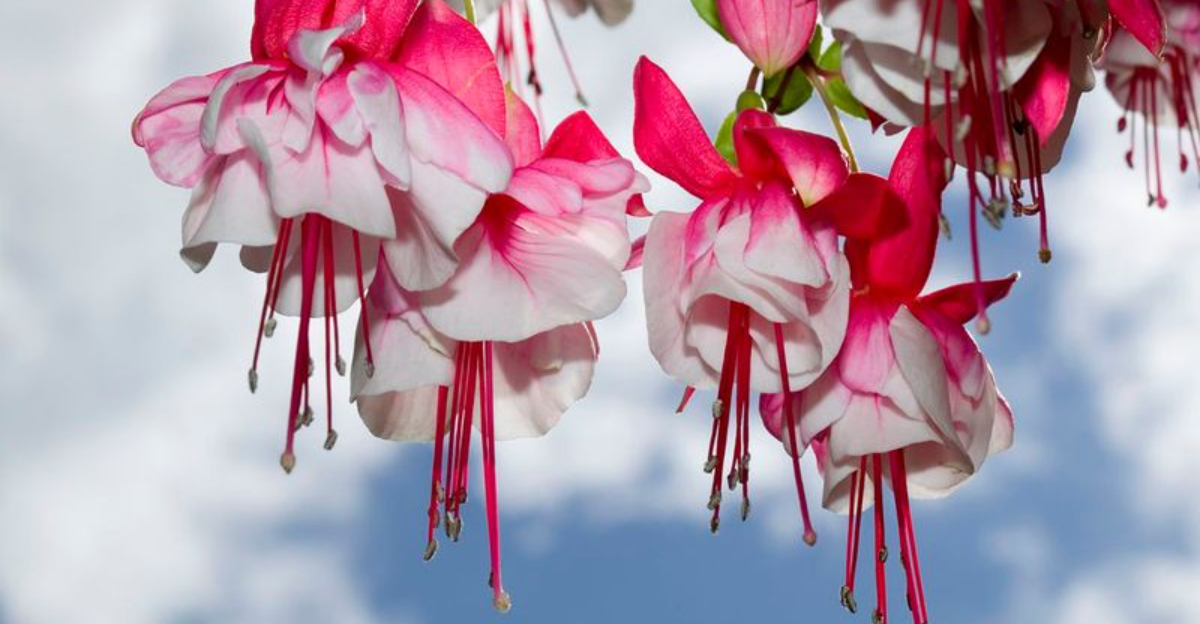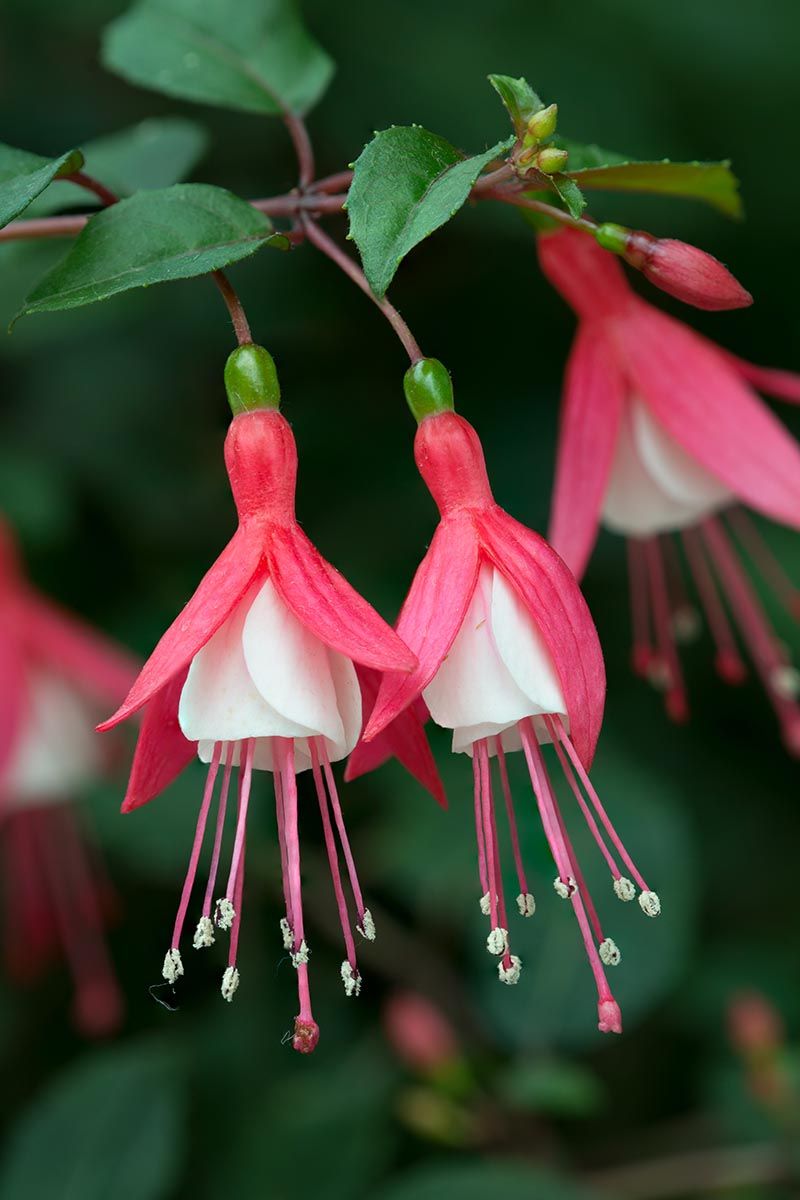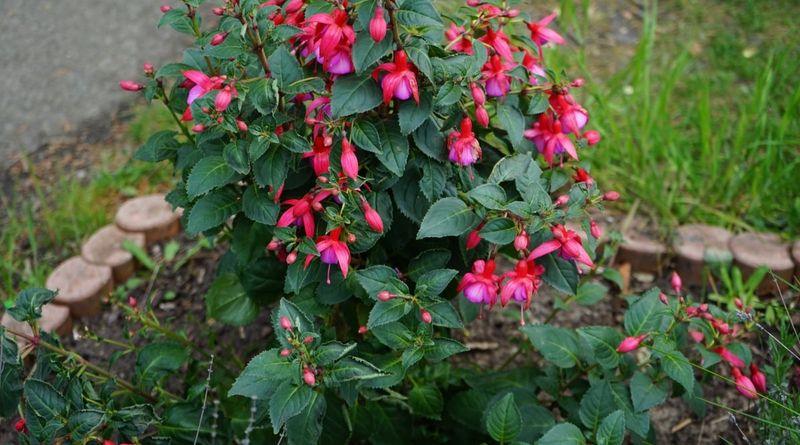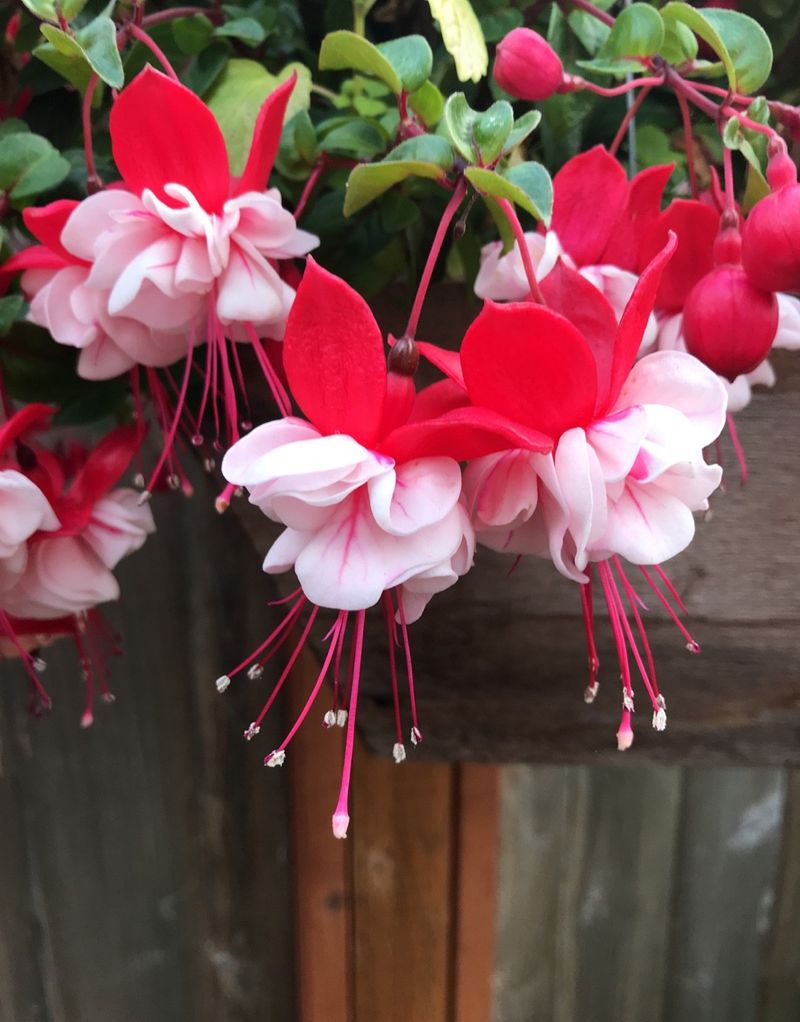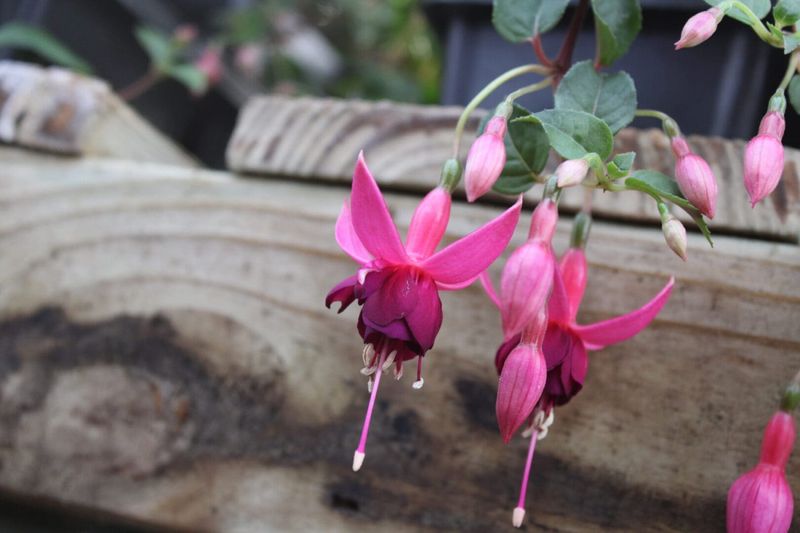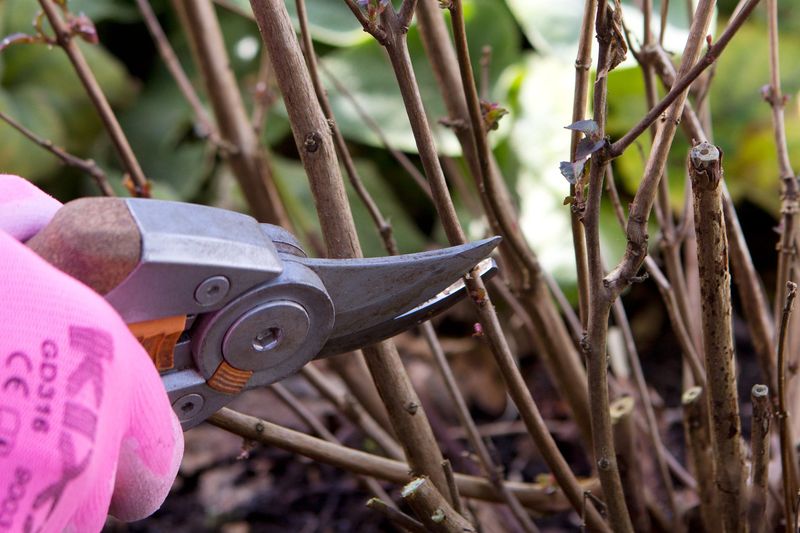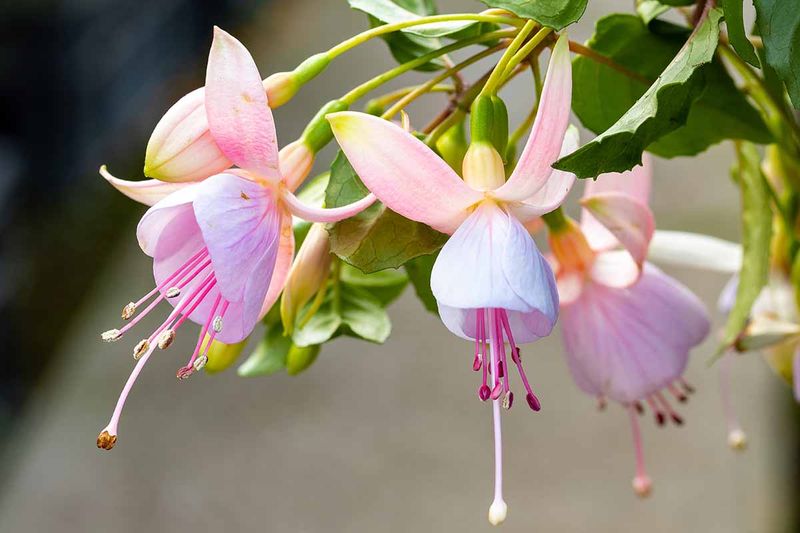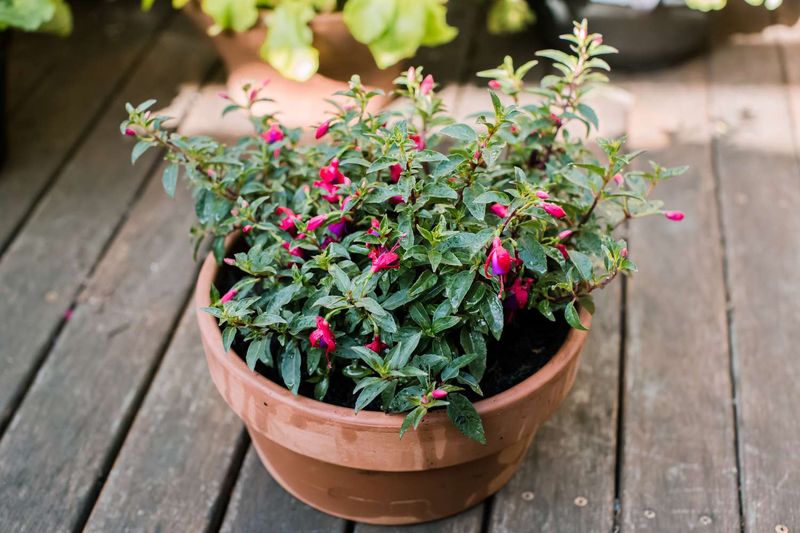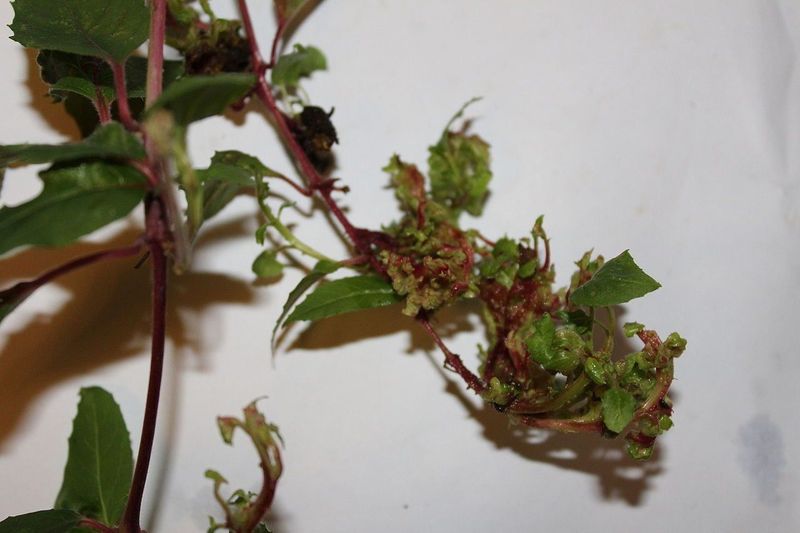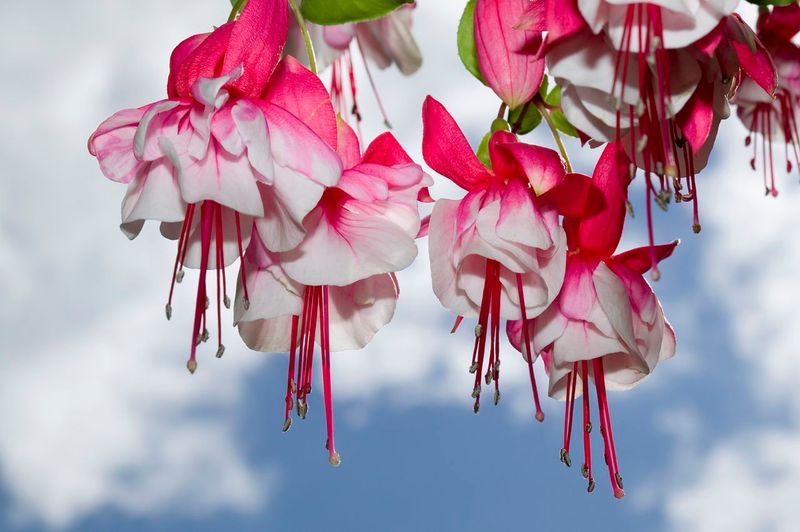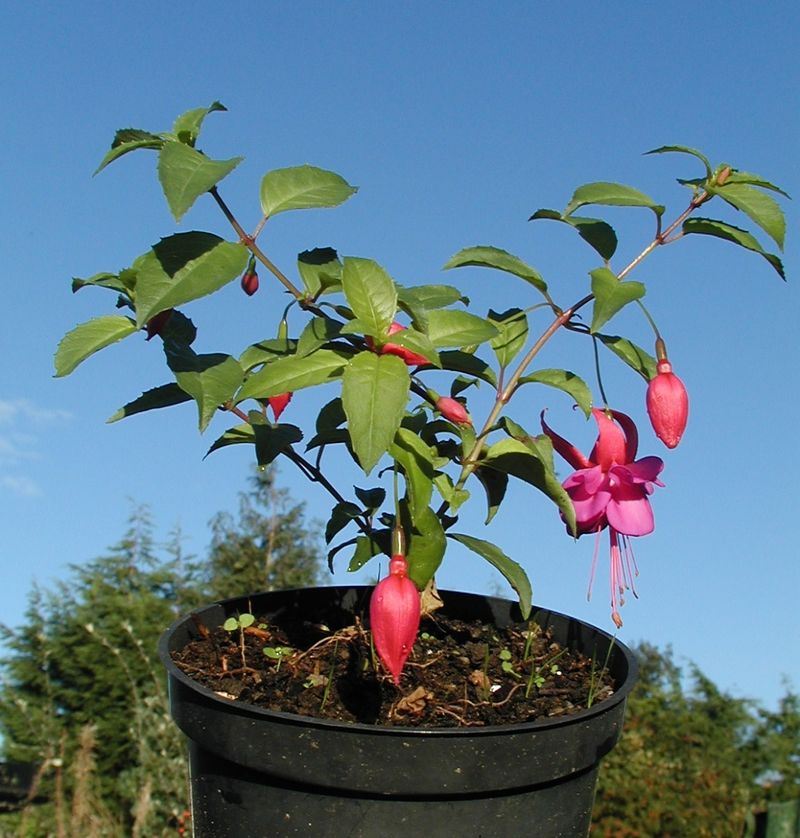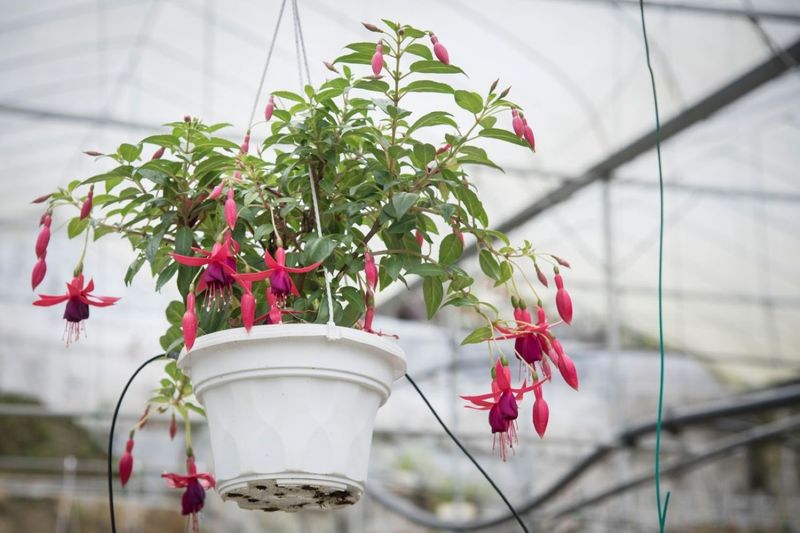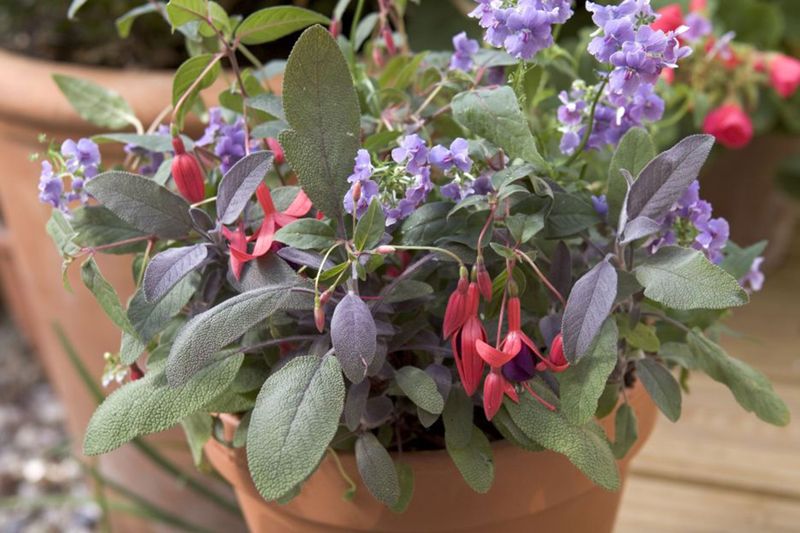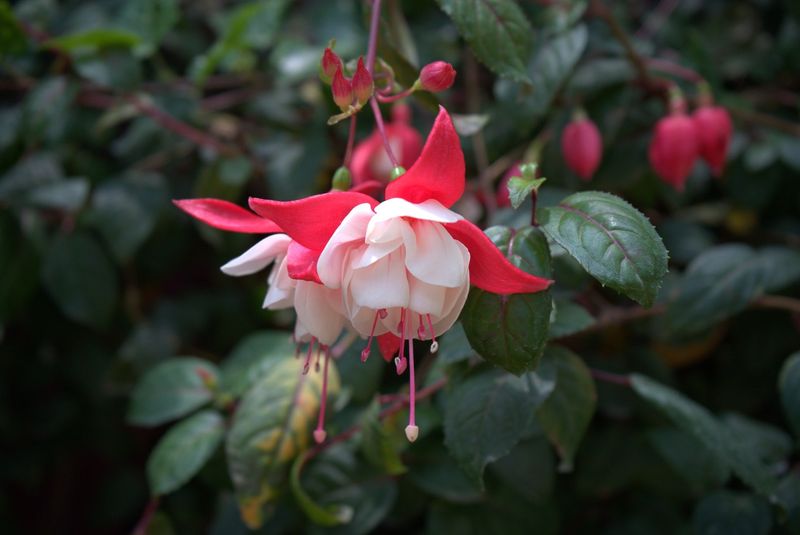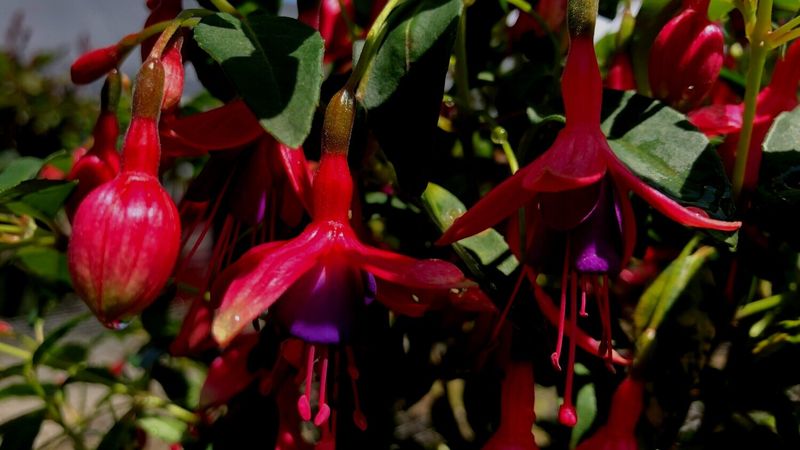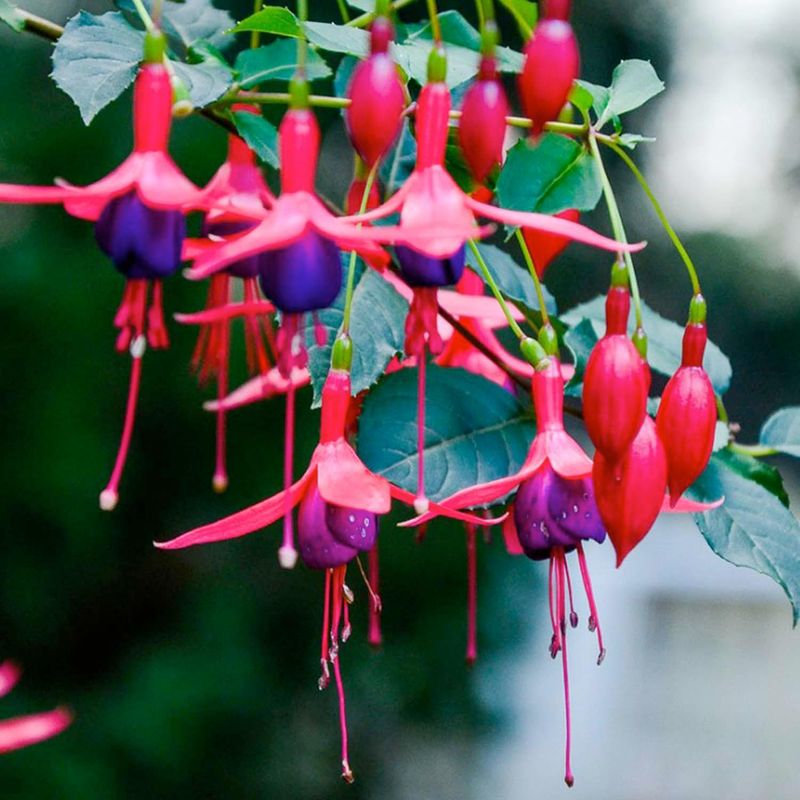Fuchsia plants are admired for their vibrant blooms and ability to thrive in shaded areas, making them a favorite among gardeners.
Whether you are a seasoned gardener or just starting, mastering the art of growing fuchsias can transform your garden into a lush paradise.
This guide reveals 15 secrets to help your fuchsia plants flourish, ensuring they remain healthy and stunning throughout the growing season.
1. Choosing the Right Variety
Selecting the right fuchsia variety is crucial for success. Some varieties are more shade-tolerant than others, such as the Fuchsia magellanica. Look for types that naturally prefer less sun to ensure they thrive.
Explore different colors and forms to find fuchsias that match your garden’s aesthetic. Experimenting with various types can unearth hidden gems that flourish in your specific local conditions.
Pay attention to bloom size and leaf shape, as these can vary significantly. Ultimately, the right choice will bring vibrant color and life to any shaded corner of your garden.
2. Ideal Soil Conditions
Fuchsias prefer well-draining, fertile soil with plenty of organic matter. A soil pH of 6 to 6.5 is ideal, promoting healthy root growth. Mixing in compost or well-rotted manure can enhance soil quality, providing essential nutrients.
Ensure the soil remains consistently moist but not waterlogged. Improving drainage with perlite or sand can help achieve the right balance. Regularly check soil conditions to maintain the perfect environment for your plants.
Remember, healthy soil is the foundation for thriving fuchsias, contributing significantly to their stunning blooms.
3. Watering Techniques
Proper watering is vital for fuchsia health. Water deeply but infrequently, allowing the topsoil to dry out slightly between waterings. This encourages deep root growth. Water early in the morning to reduce evaporation and fungal risks.
Mulching can help retain moisture and regulate soil temperature. Avoid overhead watering to prevent leaf diseases. Instead, focus on watering at the soil level.
During the growing season, monitor weather conditions to adjust watering frequency. Consistent care ensures your fuchsia plants stay hydrated and vibrant, even in shaded locations.
4. Feeding and Fertilization
Fuchsias benefit from regular feeding, especially during the growing season. Use a balanced fertilizer every two to four weeks to promote vigorous growth and abundant flowers.
Consider a slow-release fertilizer for ease and consistency. Monitor for signs of nutrient deficiencies, such as yellowing leaves, and adjust your feeding regimen accordingly.
Be cautious not to over-fertilize, which can lead to lush foliage at the expense of blooms. A well-fed fuchsia is a happy fuchsia, producing vibrant colors and healthy growth that will enhance any shady garden space.
5. Pruning for Growth
Pruning fuchsias is essential for promoting bushier growth and more blooms. Trim back leggy stems during the growing season to encourage branching. Use clean, sharp shears to prevent disease spread.
Focus on cutting just above a pair of leaves or nodes. Removing spent flowers, a process known as deadheading, can stimulate further blooming. In late fall, more substantial pruning can prepare plants for winter.
Regular pruning maintains a tidy appearance and ensures healthy plant development. By shaping your fuchsias, you’ll enjoy a lush, flowering display throughout the season.
6. Managing Shade and Light
Understanding light requirements helps fuchsias flourish in shade. While they prefer cooler, shady spots, some morning sun can boost flowering. Avoid intense midday sun, which can scorch leaves and stress plants.
Observe your garden’s light patterns to find the perfect spot. Using companion plants can create a natural shade, offering protection during hot days. If growing indoors, provide indirect light and rotate plants for even exposure.
Mastering light conditions ensures your fuchsias remain vibrant and healthy, adding beauty to shaded garden areas.
7. Container Gardening
Fuchsias thrive in containers, offering flexibility in placement and care. Choose pots with good drainage to prevent waterlogging. Use quality potting mix, enriched with organic matter, for optimal growth.
Containers allow for easier control of soil, light, and water conditions, making adjustments simpler. Regularly rotate pots to ensure even growth and flowering.
Consider companion planting with other shade-loving species for a lush, diverse display. Container gardening is an excellent way to enjoy fuchsias in small spaces or patios, maximizing their beauty and charm.
8. Pest and Disease Control
Keeping fuchsias healthy involves vigilant pest and disease control. Regularly inspect leaves and stems for signs of aphids, spider mites, or whiteflies. Use natural remedies like neem oil or insecticidal soap to treat infestations.
Ensure good air circulation to prevent fungal infections, such as botrytis or rust. Removing affected leaves can halt disease spread. Maintain cleanliness around plants by removing debris and fallen leaves.
Integrated pest management strategies can minimize chemical use, preserving the garden’s ecosystem. A healthy fuchsia is less susceptible to pests, ensuring stunning blooms.
9. Weather and Temperature Resilience
Fuchsias are sensitive to extreme temperatures. During hot summers, provide extra shade and consistent moisture. In colder climates, protect plants with mulch or bring container plants indoors.
Be mindful of sudden temperature shifts and adjust care accordingly. Selecting cold-hardy varieties can ensure winter survival in moderate climates. Monitor weather forecasts to anticipate necessary protective measures.
Proper care and attention to temperature resilience allow fuchsias to flourish season after season, maintaining their vibrant display despite environmental challenges.
10. Propagation Techniques
Propagating fuchsias through cuttings is a rewarding way to expand your garden. Take softwood cuttings in spring or summer for best results.
Use clean, sharp scissors to cut just below a node. Dip the cuttings in rooting hormone for quicker root development. Plant in well-draining soil or a propagation mix, keeping them moist and warm. Covering with a plastic dome can maintain humidity.
Within weeks, new roots form, signaling successful propagation. This method allows you to share plants with friends or fill your garden with beloved fuchsia varieties.
11. Overwintering Strategies
Preparing fuchsias for winter is vital for their survival in cooler regions. Before the first frost, cut back the plants and mulch heavily around the base. Container plants can be moved indoors or to a sheltered location.
In warmer climates, reduce watering and feeding as the plant enters dormancy. Monitor indoor conditions to prevent early growth.
Regularly check for pests and diseases even during dormancy. Proper overwintering ensures fuchsias re-emerge healthy and ready to bloom, adding color and vitality to your garden each spring.
12. Companion Planting
Companion planting enhances fuchsia growth and garden aesthetics. Choose shade-loving plants like hostas or ferns to complement fuchsias. These companions can provide additional shade and help maintain soil moisture.
Ensure ample space for each plant to thrive without competition. Companion planting can also deter pests naturally, creating a balanced ecosystem. Experimenting with plant combinations can result in a vibrant, textured garden display.
By carefully selecting companions, you can create a stunning and harmonious garden environment.
13. Mulching Benefits
Mulching offers multiple benefits for fuchsia plants. A layer of organic mulch helps retain soil moisture, crucial for shade-loving plants.
Mulch regulates soil temperature, protecting roots from extreme heat or cold. It also suppresses weed growth, reducing competition for nutrients. As it breaks down, mulch enriches the soil with organic matter, enhancing overall plant health.
Apply mulch in spring and replenish as needed. Avoid piling mulch against stems to prevent rot. This simple practice supports lush, thriving fuchsias, making it a key strategy in their care.
14. Seasonal Maintenance
Regular seasonal maintenance keeps fuchsias in peak condition. In spring, start with pruning and feeding to encourage vigorous growth. Summer requires vigilant watering and pest management.
As fall approaches, gradually reduce watering and fertilization in preparation for dormancy. Monitor for signs of disease or pest issues year-round. Adjust care routines based on weather conditions and plant needs.
Consistent maintenance ensures fuchsias remain healthy and vibrant throughout the growing season. By dedicating time to these tasks, your garden will reward you with stunning, colorful displays.
15. Enjoying Your Fuchsia Display
The ultimate reward of growing fuchsias is enjoying their stunning display. Create a seating area nearby to appreciate the vibrant blooms. Incorporate garden art or lighting to highlight their beauty.
Regularly invite friends to share in the joy of your garden’s success. Keep your camera ready to capture their ever-changing display. Engaging with your garden fosters a deeper connection to nature and enhances well-being.
As you nurture fuchsias, they will provide endless inspiration and satisfaction, turning your shaded garden into a haven of color and tranquility.
